See These and More Educational Resources at Stickman On Stone
<Independently Owned and Operated by David Harrison>
The Interconnected Cosmos
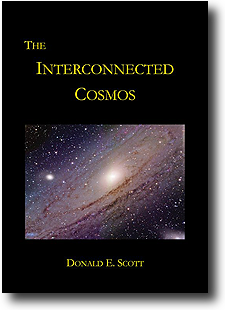 By what mechanism(s) are galaxies formed, stars created and powered, and planetary bodies held in orbit? What principle(s) allow the natural world to orchestrate uncounted expanses of interacting bodies, from the cellular level to the cosmic, while our own understandings prevent the successful interaction of any more than two?
By what mechanism(s) are galaxies formed, stars created and powered, and planetary bodies held in orbit? What principle(s) allow the natural world to orchestrate uncounted expanses of interacting bodies, from the cellular level to the cosmic, while our own understandings prevent the successful interaction of any more than two?
Unanswered questions such as these have plagued astronomy and physics for generations and, despite refinements in technique and instrumentation, we have been unable to identify a reasonable solution without further complicating our collective search for answers by the invocation of additional ill-defined variables.
However, in The Interconnected Cosmos, Donald E. Scott offers a tangible and testable solution, one of such scale and insight it may resolve these very questions and more. Not revolutionary but reformative, The Interconnected Cosmos is a re-examination of observable phenomena, much of which has only recently become available with the advent of nuanced technologies capable of seeing more than the visible spectrum, at both the laboratory and interstellar scale. It expands upon past discoveries, shines new light on many others, and suggests a potent new direction for scientific endeavors once thought impossible. Curious and inquiring readers alike will, in these pages, find a tangible and dynamic model of our universe that will both fascinate and terrify.
The Electric Universe
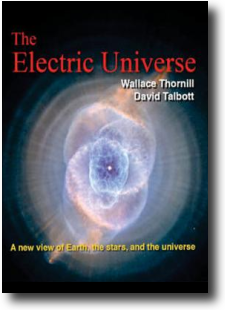
The Electric Universe illustrates the staggering diversity of behaviors, and the underlying mechanisms associated with each, observed with and around electromagnetic forces. Here David Talbott and Wal Thornhill guide readers through an exploration of these forces and and how their prevalence may represent a viable alternative to the closed, clockwork machinations supposed by current astronomical models.
Readers will learn to identify the varied, yet predicable, modes of plasma in laboratory tests, how gravity may conditionally repel rather than attract, and examine the grand currents that trace a visible latticework of filaments across interstellar space. Additional concepts include an introduction to the plasma universe, electrical challenges to Big Bang cosmology, the discovery of the Electric Sun, and the electrical nature of comets. In language designed for scientists and non-scientists alike, the authors show that even the greatest surprises of the space age are predictable patterns in the Electric Universe. Talbott and Thornhill clearly make the case for an underlying order formed by interconnected forces and provide new insights into long-unsolved mysteries leftover by conventional models.
Thunderbolts of the Gods
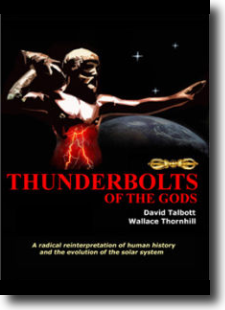 Thunderbolts of the Gods by David Talbott and Wallace Thornhill introduces the reader to an age of planetary instability and earthshaking electrical events in ancient times. The 108-page full-color monograph, based on the life work of the two authors, offers a revolutionary synthesis of historical investigation and the newly-discovered Electric Universe.
Thunderbolts of the Gods by David Talbott and Wallace Thornhill introduces the reader to an age of planetary instability and earthshaking electrical events in ancient times. The 108-page full-color monograph, based on the life work of the two authors, offers a revolutionary synthesis of historical investigation and the newly-discovered Electric Universe.
The beginning is, per popular Austrian musical opinion, a very good place to start. Thunderbolts of the Gods takes the reader on a far-reaching tour of comparative human histories and the key scientific benchmarks, laboratory discoveries, and generations of careful observation that laid the foundation for the new interconnected, structured model of the physical universe. It is indeed a very good place to start.
Here Talbott and Thornhill seamlessly weave an anecdotal humanist renaissance, packed with centuries of cultural and scientific inquiry, to provide readers with much-needed perspective on how our modern understanding of physics came to be. Thunderbolts of the Gods cites serious concerns for contemporary cosmological mechanics, the importance of scalability and real-world evidentiary phenomena, and the possible common forces that bind electrons and protons and shape the great spiraled filaments of interstellar mediums.
The Electric Sky
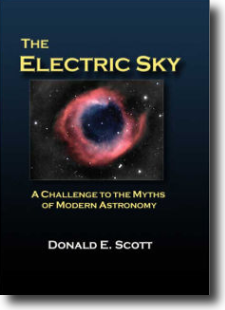 The Electric Sky is an accessible, compelling journey through the concepts proposed by a unified electric/plasma cosmology and the many conceits of standard, gravity-centric Newtonian physical models. As with The Interconnected Cosmos, Donald E. Scott, Ph. D here provides readers with intellectual tools — supplemented by appreciable levels of natural wonder and plain interpretation — to understand local and interstellar phenomena through the lens of an accomplished electrical engineer.
The Electric Sky is an accessible, compelling journey through the concepts proposed by a unified electric/plasma cosmology and the many conceits of standard, gravity-centric Newtonian physical models. As with The Interconnected Cosmos, Donald E. Scott, Ph. D here provides readers with intellectual tools — supplemented by appreciable levels of natural wonder and plain interpretation — to understand local and interstellar phenomena through the lens of an accomplished electrical engineer.
Punctuated by the waggish humor that trademarks many high-concept communicators, The Electric Sky encourages readers toward a grounded, practical, and evidentiary understanding of electric currents, plasma behavior, and its place in the greater cosmos. The Electric Sky is a must-read for anyone curious how myths that surround Big Bang cosmology can be dismantled and reconstituted without black holes, dark matter, dark energy, neutron stars, magnetic reconnection, or other popular reified, pseudoscientific fictions.
A Beginner’s View of our Electric Universe
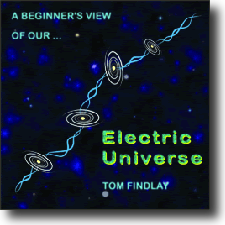
Tom Findlay’s book is a remarkable contribution from a newcomer to the Electric Universe. He shows the impact that this new and simpler way of seeing the universe can have on a practical man with a keen interest in astronomy. “A Beginner’s View” is easy to read and copiously illustrated. Tom makes a heartfelt plea for individuals to participate in science once more; to use their intuition and common sense to question the science fiction headlines and gross expenditure on massive projects. After all, history shows most great breakthroughs are made by individuals, most of them outsiders. —the late Wal Thornhill
- The late Tom Findlay’s website: New To EU













